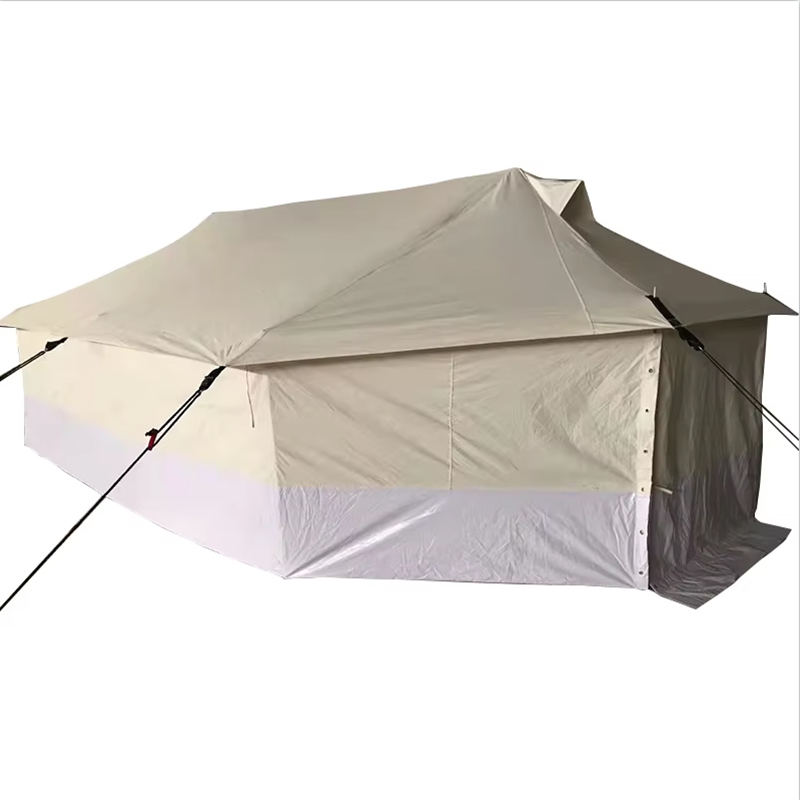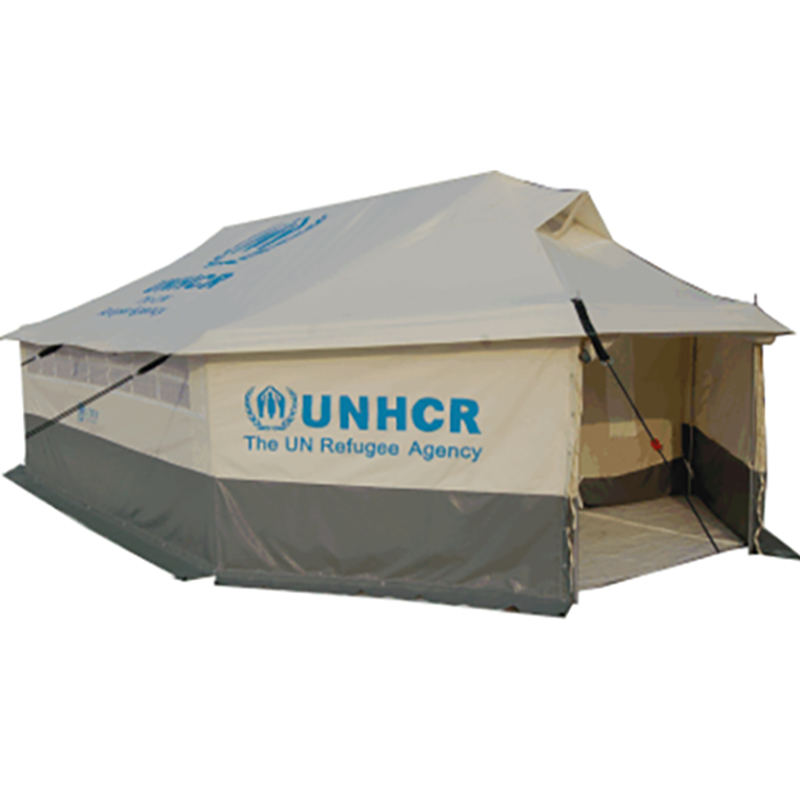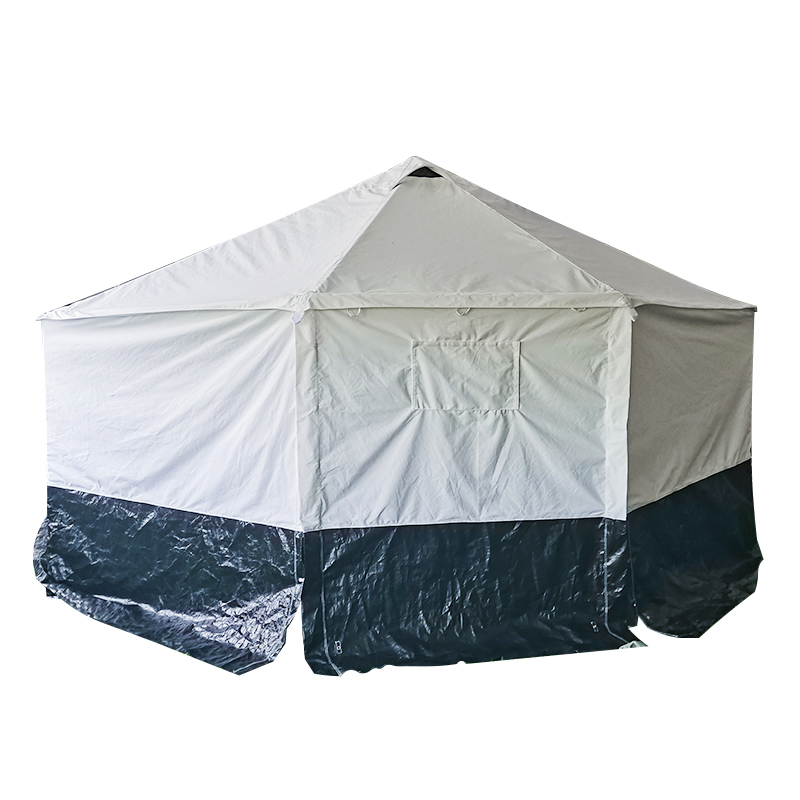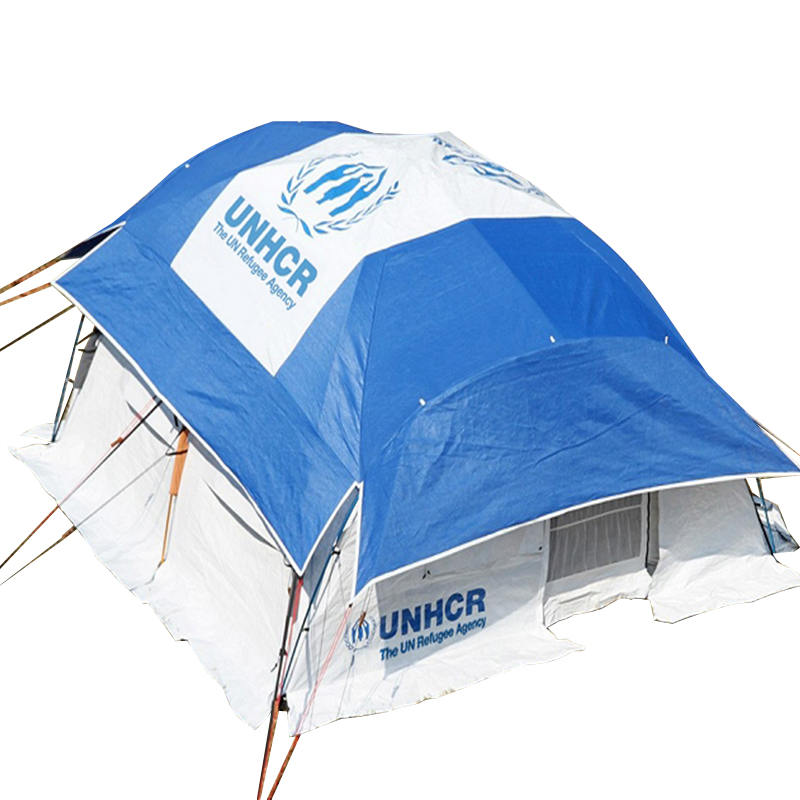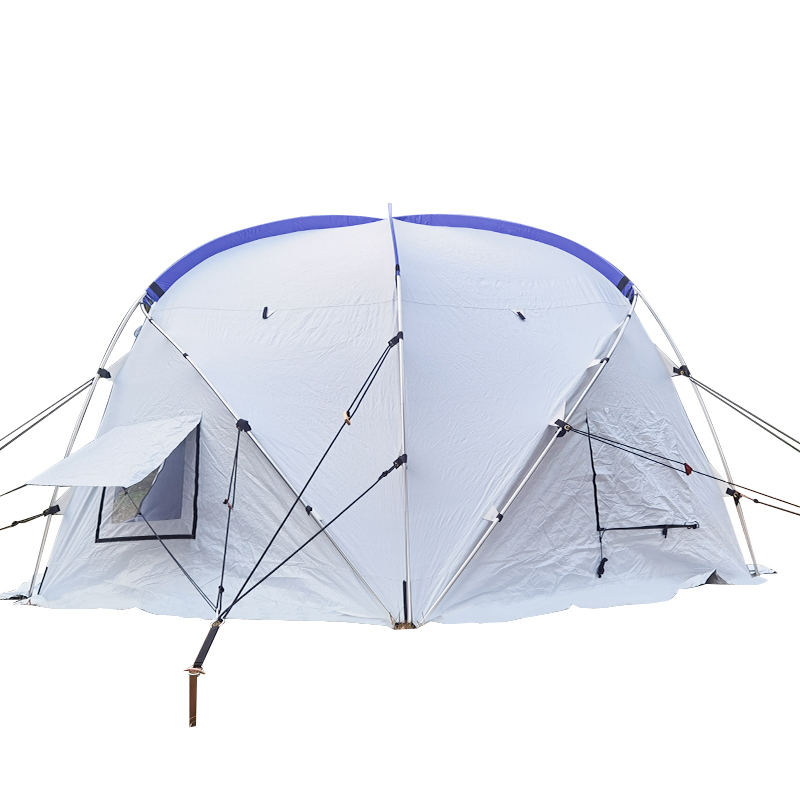Our story is about how to uphold the spirit of humanitarianism in the face of disaster, how to find solutions amidst challenges, and how to sow hope in despair.
Web Menu
Product Search
Exit Menu
Inflatable Tents in Outdoor Emergencies: How to Weigh Wind Resistance and Portability?
Posted by Admin | 17 Oct
Content
- 1 What Is the Core Role of Inflatable Tents in Outdoor Emergency Scenarios?
- 2 What Defines Wind Resistance of Inflatable Tents in Emergencies?
- 3 What Defines Portability of Inflatable Tents in Emergencies?
- 4 How to Balance Wind Resistance and Portability in Emergency Inflatable Tents?
- 5 What Mistakes to Avoid When Weighing the Two Properties?
- 6 What’s the Final Checklist for Selecting an Emergency Inflatable Tent?
What Is the Core Role of Inflatable Tents in Outdoor Emergency Scenarios?
Inflatable tents are specialized shelter tools designed for rapid deployment in outdoor emergency situations—such as mountain rescues, wilderness survival, or post-disaster temporary accommodation. Unlike traditional frame tents that rely on metal poles for support, inflatable tents use air chambers (inflated via manual pumps or battery-powered devices) to form a stable structure. Their core role revolves around two urgent needs: providing immediate protection (shielding users from wind, rain, or cold) and adapting to mobility constraints (being easy to carry when rescuers or survivors need to move quickly). In emergencies, every minute counts—so the tent’s ability to balance "staying standing in harsh winds" and "being light enough to transport" directly impacts user safety and rescue efficiency.
What Defines Wind Resistance of Inflatable Tents in Emergencies?
Wind resistance refers to an inflatable tent’s ability to withstand gusts or sustained winds without collapsing, tearing, or losing structural stability—critical in emergency scenarios where shelter failure could lead to hypothermia or exposure. Key factors determining wind resistance include:
- Air chamber design: Tents with multiple interconnected air chambers (instead of a single large chamber) are more wind-resistant. If one chamber is damaged, others remain inflated to maintain structure. Additionally, curved or aerodynamic air chamber shapes (e.g., dome-style) reduce wind drag, preventing the tent from being "pushed" or flipped over.
- Fabric strength: High-denier fabrics (e.g., 70D or 100D polyester with PVC coating) resist tearing from wind pressure or flying debris. Reinforced seams (double-stitched or heat-sealed) also prevent air leakage, which would weaken the tent’s structure during wind exposure.
- Anchoring systems: Sturdy ground stakes (made of aluminum or high-strength plastic) and thick guy lines (at least 3mm in diameter) secure the tent to the ground. The number of anchor points matters too—tents with 6–8 stake loops and 4+ guy line attachments distribute wind force more evenly.
In emergency tests, a wind-resistant inflatable tent should withstand sustained winds of 30–40 km/h (19–25 mph) and short gusts up to 50 km/h (31 mph) without significant damage.
What Defines Portability of Inflatable Tents in Emergencies?
Portability refers to how easy an inflatable tent is to carry, transport, and deploy—essential in emergencies where users may need to hike long distances, carry multiple supplies, or set up shelter quickly. Key indicators of portability include:
- Weight: Emergency inflatable tents typically weigh 2–5 kg (4.4–11 lbs). Lighter models (under 3 kg) are ideal for solo rescuers or survivors carrying backpacks, while heavier models (3–5 kg) may be used in team rescues with shared loads.
- Packed size: When deflated and folded, the tent should fit into a backpack or emergency kit. A portable model will have a packed size of 30–50 cm (12–20 inches) in length, similar to a small sleeping bag.
- Deployment time: Inflatable tents should be set up in 5–10 minutes. Manual pumps (included with the tent) should be lightweight (under 300g) and easy to operate, while battery-powered pumps (if used) should have a compact design and long battery life.
In emergency scenarios, a portable tent reduces physical strain on users and ensures shelter can be deployed before harsh weather worsens.
How to Balance Wind Resistance and Portability in Emergency Inflatable Tents?
Balancing these two properties requires prioritizing needs based on the specific emergency scenario (e.g., wind intensity, travel distance) and avoiding trade-offs that compromise safety. Below are three core strategies:
1. Prioritize Wind Resistance in High-Wind Environments
In areas prone to strong winds (e.g., mountain tops, coastal regions, or open plains), wind resistance becomes the top priority—even if it means a slightly heavier tent. For example:
- Choose a tent with 3+ air chambers, reinforced fabric (100D polyester), and a full anchoring system (stakes + guy lines).
- Accept a weight of 3–4 kg (instead of 2 kg) and a packed size of 40–45 cm (instead of 30 cm) to gain better wind protection.
- Opt for a dome or tunnel-style design, which are more aerodynamic than cabin-style tents and less likely to catch wind.
A wind-failure in these environments could leave users exposed to life-threatening conditions, so the extra weight is a necessary trade-off.
2. Prioritize Portability in Mobile Emergency Scenarios
In scenarios requiring long-distance travel (e.g., hiking to a remote rescue site, evacuating survivors through rough terrain), portability takes precedence—with wind resistance set to a "minimum safe standard." For example:
- Select a lightweight tent (2–2.5 kg) with 2 air chambers (sufficient for winds up to 30 km/h) and 4–6 anchor points.
- Choose a fabric of 70D polyester (lighter than 100D but still tear-resistant) and a compact manual pump.
- Ensure the packed size is under 35 cm to fit into a standard backpack alongside food, water, and first-aid kits.
Here, a heavy, wind-resistant tent would slow down travel and delay shelter deployment—posing a greater risk than moderate wind exposure.
3. Opt for "Dual-Use" Designs for Uncertain Environments
For emergencies where wind conditions are unpredictable (e.g., wilderness survival where weather can change suddenly), choose tents with adjustable features that balance both properties:
- Removable guy lines: Attach guy lines for extra wind resistance when needed, or remove them to reduce packed size and weight during travel.
- Modular air chambers: Inflate all chambers for high winds, or deflate one non-critical chamber to reduce weight if moving quickly (though this should only be done in mild winds).
- Lightweight but reinforced fabric: Look for 80D polyester with a thin PVC coating—lighter than 100D but stronger than 70D, offering a middle ground between weight and durability.
These designs let users adapt the tent to changing conditions, avoiding fixed trade-offs.
What Mistakes to Avoid When Weighing the Two Properties?
Emergencies often lead to hasty decisions—here are two common mistakes to avoid when balancing wind resistance and portability:
1. Sacrificing Wind Resistance for Extreme Portability
Some users choose ultra-light tents (under 2 kg) with single air chambers and thin fabric to save weight, only to find the tent collapses in moderate winds (25–30 km/h). In emergencies, a collapsed tent not only leaves users exposed but also wastes time and energy trying to repair or re-inflate it. Always ensure the tent meets a minimum wind resistance standard (withstanding 30 km/h winds) before considering portability.
2. Overlooking Portability for Excessive Wind Resistance
On the other hand, selecting a heavy, industrial-grade inflatable tent (5+ kg) with reinforced steel stakes may provide excellent wind resistance—but if it’s too heavy to carry to the emergency site, it becomes useless. Avoid tents designed for permanent camping (e.g., car camping) in favor of those specifically labeled "emergency" or "backpacking," which are engineered to balance both properties.
What’s the Final Checklist for Selecting an Emergency Inflatable Tent?
To ensure you weigh wind resistance and portability correctly, follow this four-step checklist:
- Assess the environment: Determine the maximum wind speed likely in the area (e.g., 30 km/h for forests, 40 km/h for mountains) to set a wind resistance baseline.
- Calculate travel needs: Estimate the distance you’ll carry the tent and the number of people sharing the load—this determines the maximum acceptable weight (e.g., 2.5 kg for solo travel, 4 kg for team travel).
- Verify key features: Check for 2+ air chambers, 70D+ fabric, 4+ anchor points, a packed size under 50 cm, and deployment time under 10 minutes.
- Test if possible: If conditions allow, inflate the tent and test its stability in mild winds (15–20 km/h) to ensure it’s easy to set up and doesn’t leak air.
By grounding your choice in the specific emergency scenario, you’ll select a tent that keeps users safe (via wind resistance) and mobile (via portability)—the two most critical needs in outdoor emergencies.
Related Products
- Cell Phone:+86 15695147631
- Cell Phone:+86 18630605111
-
Email:
[email protected]
[email protected]
[email protected] - Add:No.9 Kangmin Road, Automobile industry Park, Yizheng City, Jiangsu Province, China
Copyright © Yangzhou Mailenda Outdoor Products Co., Ltd.
All Rights Reserved.
Custom Tent OEM/ODM Manufacturers

- Privacy Statement
- Terms & Conditions
- Sitemap


 English
English 中文简体
中文简体 Español
Español 日本語
日本語 русский
русский عربى
عربى